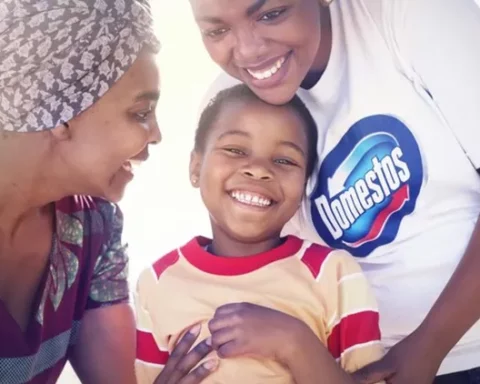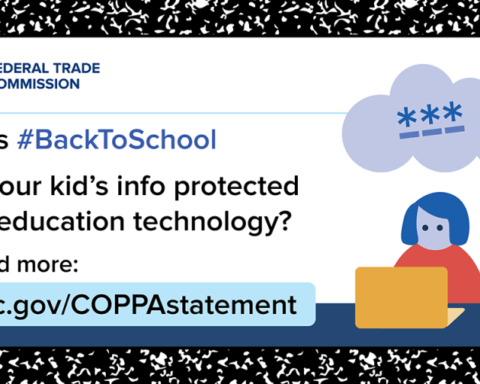The School Toilet Report finds that 9 in 10 children impacted physically and emotionally by poor state of school toilets
- An international study from Domestos shows that nearly 1 in 5 children experience physical discomfort or inability to concentrate from ‘holding it in’ and not going to the toilet at school because the facilities are dirty or unusable
- More than 1 in 10 children deliberately skip food or drink to avoid using a school toilet
- The issue is felt across the world as study delivers findings that are matched across India, UK, Poland and South Africa
London – This World Toilet Day, Domestos has released ‘The School Toilet Report’, a four-country study examining the experiences children encounter in relation to their school toilets. The report reveals that nine in ten (90%) children face issues with their school facilities, causing anxiety and even absence from school. This is despite parents stating that ‘access to clean and private toilets’ is as important as ‘teaching quality’ in schools.
The School Toilet Report – which spoke with both parents and children (aged 6-13) in India, Poland, South Africa and the UK – finds:
- Eight in ten (86%) children reported cleanliness as an issue in school toilets, including unflushed toilets, wet floors and urine or faeces on the seat or floor
- Nine in ten (89%) children report that their toilets are ‘neglected’ with missing or broken items. This rises to 91% of children in South Africa
- Over half (53%) of children feel unsafe using school toilets due to poor lighting or lack of doors and gates
- Only 1 in 6 (15%) children have told an adult about the poor state of their school toilets, representing the invisibility of the problem. Reducing to less than 1 in 10 (8%) in Poland.
These experiences are negatively impacting children’s wellbeing. According to the study:
- Almost a fifth (18%) children report ‘discomfort’ and over 1 in 10 (12%) find it hard to concentrate in class due to ‘holding it in’ to avoid using dirty and poorly maintained school toilets. Rising to 23% and 13% respectively in South Africa
- More than one in ten children (12%) say that they deliberately don’t eat or drink at school to avoid using the toilet. Rising to 17% in India
- Impact extends to school absence with almost one in ten (7%) children missing school to avoid using toilets. In India this increases to one in five (15%), with 7% of children in the UK reporting absence due to the state of school toilets
The report also highlights a disconnect between parental expectations and the realities faced by their children. With the global pandemic forcing heightened hygiene awareness, almost all parents (94%) state that clean and private toilets are as important as teaching quality (95%) and overall school hygiene (95%). Parents are however seemingly unaware of the issues as four in five (80%) rate their child’s school toilets as “good”.
Madhusudhan Rao, Domestos EVP of Home and Hygiene, said: “As an individual who has been engaged in sanitation issues for many years, this report makes for challenging reading, given the progress the international community hoped to make on global sanitation. For over a decade, Domestos has been working on improving school sanitation, working alongside partners including UNICEF, development agency GIZ and governments to run toilet operations and maintenance programmes. Through these programmes, we knew that children were suffering, but this report brings the very latest insights into the sheer prevalence and scale of the issues faced. It has never been clearer that there is an urgent need for immediate action to tackle this international school sanitation crisis.
“We will continue to work via a multi stakeholder approach with a variety of partners to seek multi-lateral solutions, whilst drawing on the findings of The School Toilet Report to better inform our work, such as the Cleaner Toilets Brighter Futures programme. We aim to help 100 million people access improved sanitation and hygiene by 2030, and this report shows that our children must be made a priority on this journey.”
Professor Kwame Akyeampong, Professor of International Education and Development at the Open University, who contributed to the report, stresses the urgent need to connect the conversations of education and sanitation in order to tackle the huge global development challenges of substandard school toilets and school attainment.
Professor Akyeampong said: “The findings of this study must act as a wakeup call for us all – governments, donor agencies, NGOs, teachers and parents – to redouble the efforts to ensure every school is able to provide clean and usable toilets. No child should feel anxious about attending school because they are nervous to use the school bathrooms. No child should feel discomfort from ‘holding it in’. If every child deserves a quality teacher to maximise their learning, then equally every child, from every country, deserves access to clean school toilets to ensure schools are safe places for children and conducive to learning. It is the only way to make equitable access to quality education truly meaningful for every child.”
The report suggests ways for children and parents to start to address the issue, given so few children (15%) vocalise the poor state of their school toilets. Parents now have the opportunity discuss this hidden problem with their children using the Domestos conversation guide ‘Let’s Talk School Toilets’ to better understand how they feel about the school toilets, and its impact on their school experience. Parents can access the guide on 19th November.
The School Toilet Report, 2021
To understand the scale and impact of poor school sanitation more clearly, Domestos surveyed over both parents and children across India, Poland, South Africa and the UK and asked them about both perceptions and experiences of today’s school toilets.
The online survey – conducted between July and October 2021 – comprised 4,115 parents with children between the ages of 6 and 13 and 3,862 children in the same age group and who attended school in some capacity.
The breakdown of parents and children in each of the four markets was as follows:
- India parents (1,026), India children (928)
- Poland parents (1,040), Poland children (1,002)
- South Africa parents (1,020), South Africa children (951)
- UK parents (1,029), UK children (981)
Research findings:
- 4 in 5 parents (80%) rated the cleanliness of their children’s school toilets as “good”
- 2 in 3 parents (65%) said they were happy with their children’s school toilets
- 2 in 3 parents (66%) say their children’s school toilets are better now than when they went to school
- 1 in 6 (15%) of children surveyed said they had told an adult about the poor state of school toilets
- 9 in 10 (90%) children report something negative in their school toilet. The issues experienced vary but the most common issues included:
- Toilets smell bad
- Wet floor
- Toilet paper on the floor / toilet seat / toilet bowl
- No toilet paper
- Not flushed / unflushed poo
- Many children using the same bar of soap
- No soap to wash hands with
- 9 in 10 (89%) children report neglected toilets, with 7 in 10 (71%) reporting issues surrounding handwashing or and (53%) reporting issues surrounding safety
- 1 in 3 children (32%) have reported a negative physical response as a consequence of avoiding the school toilets
- 9 in 10 (86%) children reported cleanliness as an issue in school toilets, including unflushed toilets and wet floors
- 2 in 10 (18%) children experience discomfort from not going to the toilet at school, while 1 in 10 (12%) skip snack, lunch or a drink to avoid the toilet




